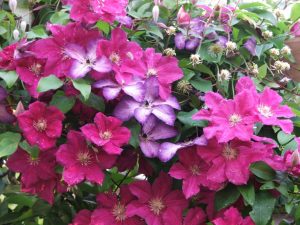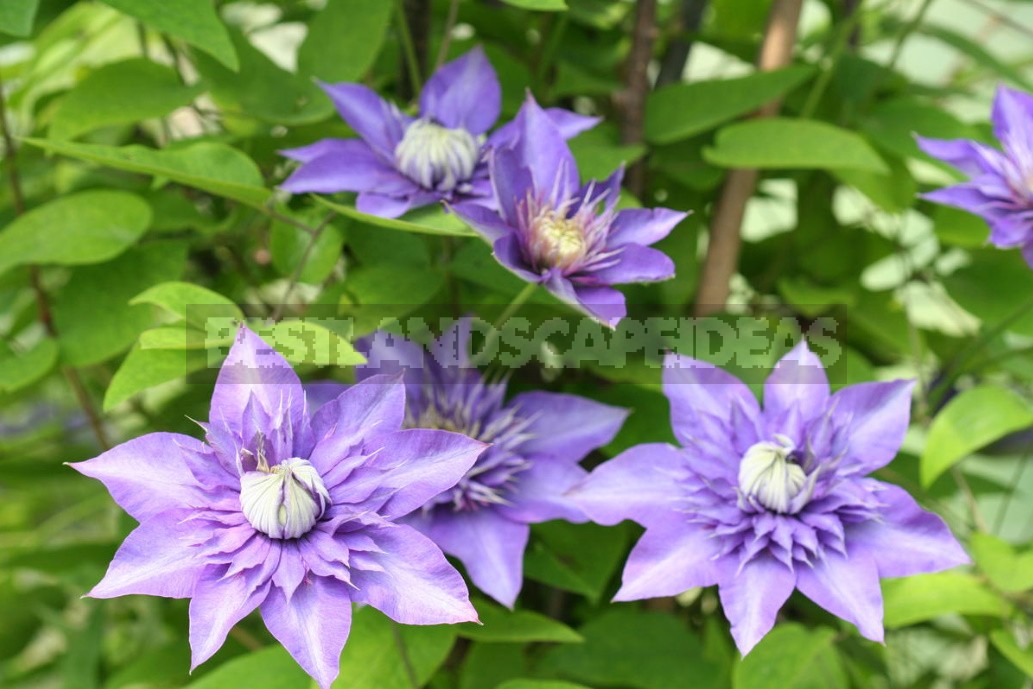
Spring has finally arrived! With anxiety and hope, we go to the garden. Of course, there are losses, but not everything is as bad as expected. And we begin to loosen, dig, trim, tie, rake needles, hoping to help their Pets after another winter.
Spring chores: removing the shelter, loosening, tying up
Cover with clematis should be removed gradually: first the spruce branches, leaves, peat or part of the land. If the soil has thawed, it must be loosened to destroy the soil crust and provide air access to the roots. Spruce branches and part of the peat is better left to positive night temperatures.
Clematis, like all buttercups, early begin the growing season-usually at an average daily temperature above +5°C. By this time, you need to carefully lift the shoots, examine them, remove damaged and weak, and healthy cut to live pairs of kidneys and distribute them on the support. Usually, the growth of shoots in clematis begins in the first decade of may, if there are no significant deviations from the average weather conditions.
Sand around the neck should be removed, treat the base of the shoots and the ground around the bushes with a 1% solution of copper sulfate. Then pour a fresh layer of sand (2-3 cm) mixed with ash and charcoal (1-2 cups of ash and 1 liter jar of crushed charcoal on a bucket of sand). If there is no sand, then pour ash and charcoal into the base of the Bush and loosen the ground.
Do not rush to dig up the ground and check whether the clematis has started to grow – you can break a single, very fragile young shoot and lose the plant.
When the average daily temperature exceeds +10°C, intensive growth of shoots begins, they grow by 7-10 cm per day. The leaves on the shoots have not yet unfolded, the petioles are small and can not cling to the support. To ensure that young shoots do not break, do not intertwine with each other and do not form dense plexuses, it is very important at this time to distribute them on the support and tie them firmly.
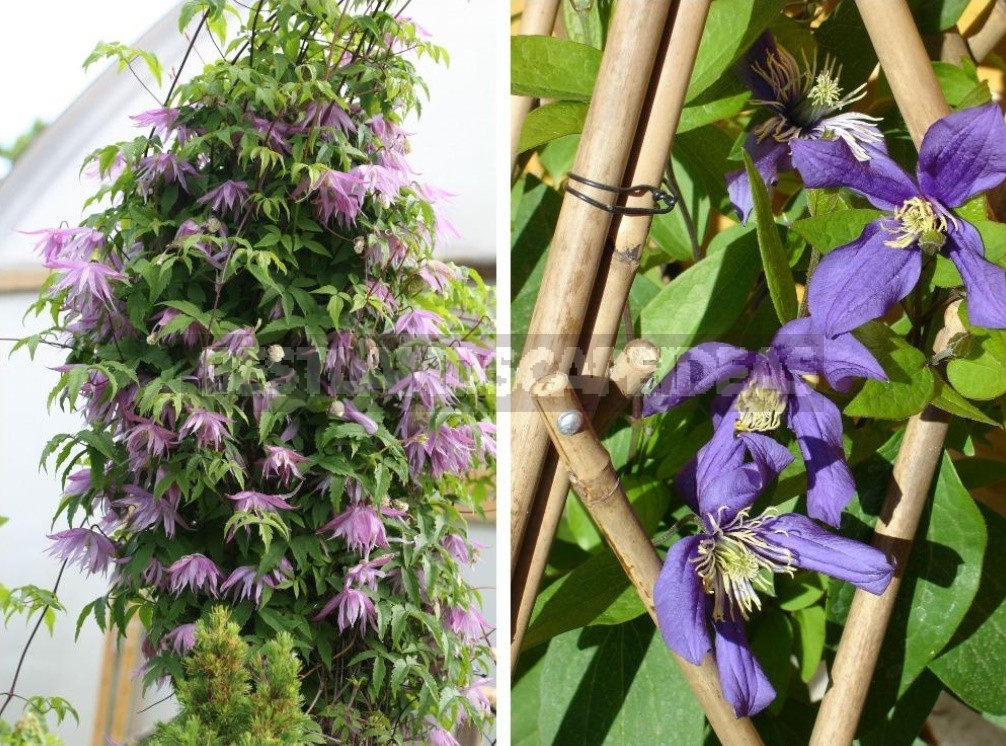
Night frosts below -5°C can damage the tops of shoots. Do not worry, in this case, two new shoots are formed, but the flowering will be delayed for 10-14 days.
Feeding schedule
During the growing season, clematis must be fed at least 5 times. The first feeding is done in late April-early may with a solution of ammonium nitrate (20 g per 10 liters of water) or 1-2 handfuls of fertilizer sprinkle (“salt”) around the Bush with subsequent sealing. Usually a bucket of fertilizer solution is spent on 1-5 plants, depending on the age and size of the Bush, one bucket goes to a 5-10-year-old Bush.
The second feeding — in 7-10 days-it is desirable to make organic fertilizers: infusion of mullein (1: 10), chicken droppings (1:15), infusion of fermented grass (1:10). If there are no organic fertilizers, then feed with a solution of urea (10 g per 10 liters of water).
The third feeding — 10-14 days after the second-make a complete complex fertilizer — 1 tablespoon per 10 liters of water. Try to alternate organic and mineral fertilizers.
The fourth feeding — during budding – phosphorus-potassium fertilizer. Remember: do not use fertilizers containing chlorine for clematis!
The fifth feeding – after mass flowering and pruning (for clematis of the second group of pruning, more on this below) – a full complex fertilizer (1 tablespoon per 10 liters of water). During flowering, fertilizing is not recommended, they reduce the flowering time!
In the spring, between the second and third fertilizing (somewhere in mid-late may), it is useful to pour lime milk on clematis (100-150 g of slaked lime or crushed chalk per 10 liters of water).
Foliar top dressing is effective: in spring-a weak solution of urea (1 tablespoon per 20 liters of water), in summer – a full mineral fertilizer. Every year I make 3 foliar top dressing not only for clematis, but also for roses and perennials: one — with a solution of trace elements (according to the instructions), two — with a solution of potassium permanganate (2-3 g) plus boric acid (1-2 g) per 10 liters of water. The latter solution is also a preventive tool against diseases.
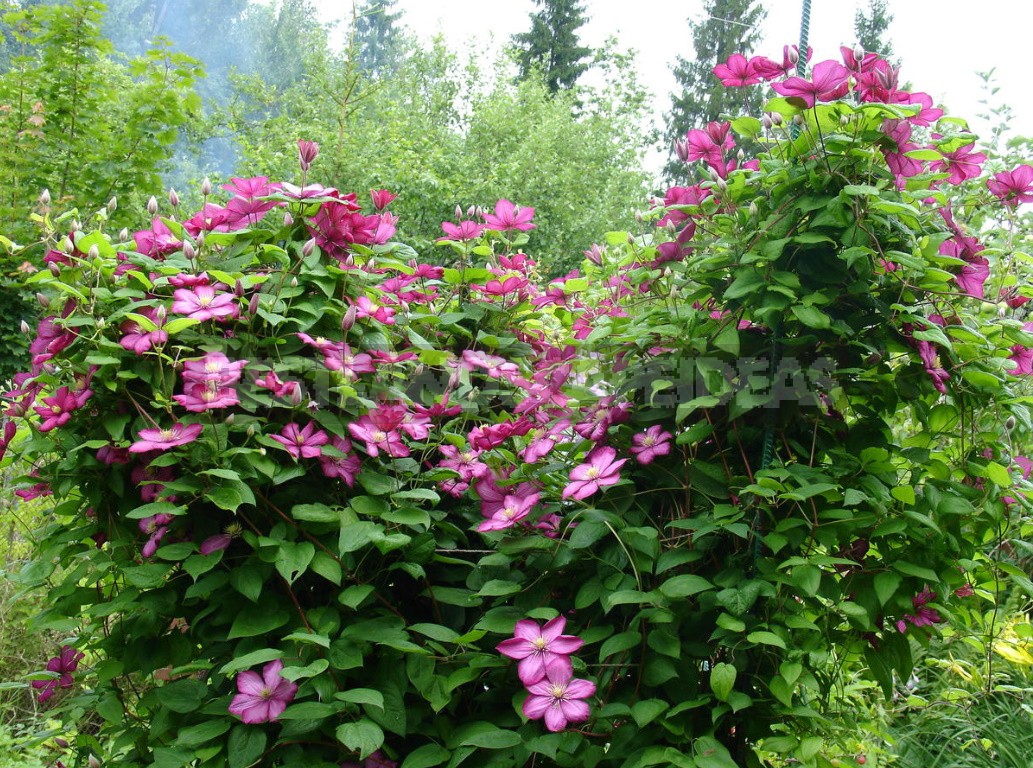
At the end of summer, put 2-3 cups of ash under each clematis Bush.
Irrigation features
Clematis like not only to eat, but also to drink. In the middle lane, it is enough to water once a week. If the summer is hot and dry-in 5 days. It is necessary to carefully monitor the state of the soil-clematis like normally moist soil. In waterlogged soils, the roots do not have enough air (water and air in the soil are antagonists), and they can not fully provide the plant with nutrients.
In the first year after planting, the watering depth should reach 40-50 cm, in the future 70-80 cm. In a loose rich soil, clematis roots penetrate to a depth of 80-100 cm, so an adult plant requires from 30 l to 50 l of water.
It is recommended to first water the ground near the center of the Bush, then along the periphery. You can not water the center of the Bush, the bases of shoots and leaves!
Drip irrigation is most effective for clematis. It is advisable for watering and fertilizing to install perforated pipes during planting or make vertical wells with a diameter of 10-15 cm, which are filled with gravel or crushed stone.
After watering or rain, it is desirable to loosen the soil. It is better to do this in 1-2 days, when the soil is still wet. Loosening wet or dry soil is useless.
Good results are obtained by mulching the soil (retreating 10 cm from the neck) with rotted manure or compost, sprinkled with peat on top – in this case, during watering or rain, the plants get full nutrition, and the soil does not dry out.
Clematis pruning
An important agricultural technique for growing clematis is pruning. How it is made depends on the growth and development of the plant, the timing, duration and abundance of flowering.
How to trim clematis? This depends on the group they belong to.
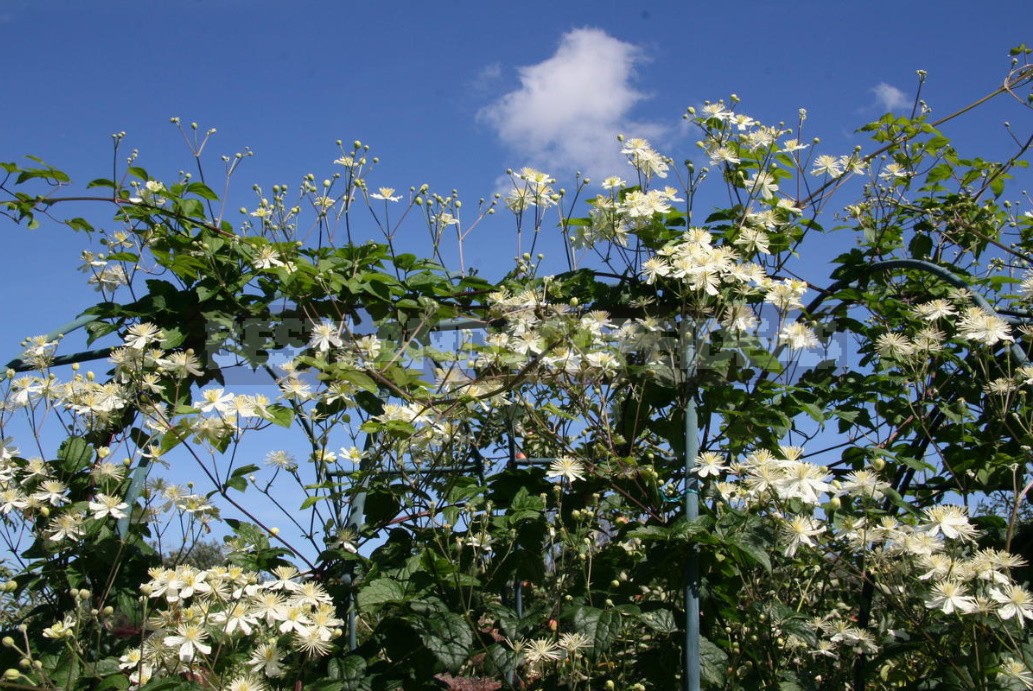
Atragene and Montana, as well as their varieties, are allocated to the first group of pruning. Plants of this group are grown without pruning. After flowering, remove weak and dead shoots and thin out dense, overgrown bushes.
The second group of pruning-clematis from the Patens, Florida and Lanuginosa groups, which bloom in early summer (late may, June) on the shoots of the previous year and again – from July to September on the shoots of the current year. Pruning is also performed twice.
In the summer after the first flowering, remove the faded part on last year’s shoot or, if it is weak, completely cut it out. In autumn, flower buds are laid on the shoots of this year, so they are only shortened (weak pruning), leaving 10-15 nodes (1-1. 5 m). Completely cut out only diseased and damaged shoots. With a strong autumn pruning of all shoots (up to 1-3 nodes) in varieties of these groups, flowering for the next year occurs on the current shoots at the end of July – in August and even in September. In some varieties, it is weak, in others it may not be at all.
Some varieties of the Lanuginosa group bloom profusely on the shoots of the current year from the beginning of July to autumn (‘Silmakivi’, ‘Kullus’ and others). Such varieties can be cut in the fall as clematis of the Jackman and Viticella groups, i.e. do a strong pruning.
Large-flowered clematis groups Jackman, Viticella and Integrifolia, blooming on shoots of the current year, belong to the third group of pruning. It is recommended to cut in the fall before hiding for the winter all the shoots to the base or to the first real leaf. I advise you to leave 4-6 pairs of buds on the part of the shoots, and in the spring cut them to a healthy pair of kidneys. From these buds, young shoots develop earlier than the main ones, and since flower buds are laid at the young growth of the current year, they bloom earlier by 1-2 weeks.
You can pinch the tops of the current shoots, then instead of one, two shoots will develop, and flowering will be delayed for 1-2 weeks. This is how the timing of clematis flowering is regulated.
If you do not cut the clematis shoots of these groups in the fall, then in the spring the young growth begins to develop from the upper pairs of buds, about 10-15-th, and the lower part of the Bush remains bare.
If you do not know which group the purchased variety belongs to, cut the shoots to different heights – some completely, others up to 10-15 knots. This combined pruning will allow you to determine on which shoots (last year or this year) and at what time flowering occurs.
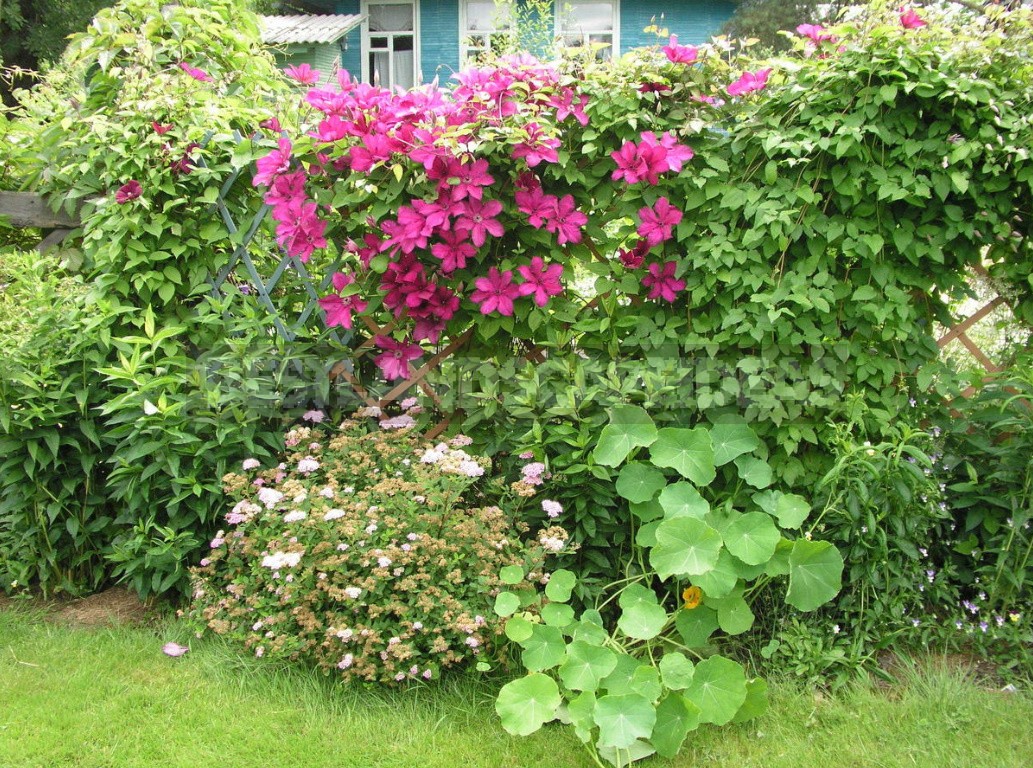
Do not forget that in the year of planting clematis of all groups should be cut in the fall to the first real leaf.
After autumn pruning, treat the base of the shoots with 1 % iron vitriol, preferably before removing the sand from the neck, and then replace it with a new one.
These are the basic rules for caring for clematis: feed it plentifully, water it on time, and trim it wisely. Do not regret the time spent on their implementation. Clematis will more than repay you for your care.


